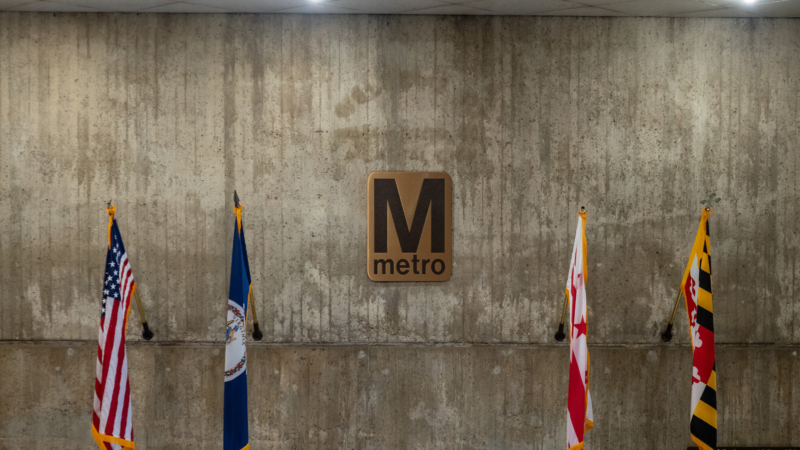
One persistent fear over the last 18 months is that a post-pandemic reopening of offices paired with an unwillingness of office workers to return to taking transit would lead to a “traffic apocalypse” of clogged roads and nightmarish commute times.
Washington, D.C., is providing a case study in why these fears are overblown. Despite a near-total collapse in the area’s Metro rail transit system, traffic volumes are actually below pre-pandemic congestion levels.
For the past month Metro has been running much-reduced service, with 20- to 24-minute gaps between the trains on most lines. That’s because 60 percent of Metro’s train cars are out of service. A problem with wheel assemblies on the 7000-series cars was causing a mounting number of derailments.
Hopes that this problem would be fixed relatively quickly were dashed today when the Washington Metropolitan Transportation Authority (WMATA), which operates Metro rail, announced that the elongated waits would continue until December 31.
WMATA has started a new, stepped-up inspection schedule that it hopes will soon let these trains safely carry passengers once again. But even if that proves successful, the process of taking the cars out of storage and making them ready for revenue service again will take time.
So WMATA still has no timetable for bringing back the 7000-series cars. The return of its 6000-series vehicles—which were yanked from service last year after several train decoupling incidents—will also be delayed, thanks to a shortage of available parts caused by global supply chain problems.
Average weekday boardings on Metro rail were north of 200,000 the week before the 7000-series cars were taken out of service. As of last week, that number had fallen to around 126,000—around 28 percent of 2019 November ridership levels. That’s the lowest level of ridership since Metro rail service began in 1977.
The sudden reduction in rail service had initially sparked fears that as riders opted to drive to work instead, the result would be intolerable levels of traffic congestion. A number of solutions were floated to mitigate this seemingly inevitable “carpocalypse,” from stepped-up bus service and emergency pop-up bus lanes to free bikeshare rides.
Some transportation researchers were musing that a carpocalypse could strike many American cities as we extricated ourselves from the pandemic. Between a collapse in transit ridership, rising auto sales, and the lingering health concerns people might have about riding on crowded buses and trains, they feared near-impassable freeways. A Vanderbilt University study predicted that San Francisco and New York would see commute times increase by 16 minutes and 11 minutes, respectively, if 25 percent of transit riders were to switch to single-occupancy vehicles.
The same study suggested that D.C. would see only about an additional minute of travel time if 25 percent of transit riders switched to driving alone. But even that appears to be an overestimate.
According to GPS manufacturer TomTom, traffic congestion in D.C. last week was about 7 percent below 2019 levels. That’s up from the week prior to the Metro meltdown, when traffic congestion was at 19 percent of 2019 levels.
There are a couple of reasons why traffic volumes have remained below-average even with a barely functional Metro system, says Marc Scribner, a transportation policy analyst at the Reason Foundation (which publishes this website).
“We’re able to absorb these kinds of transportation problems better than other places because we have a workforce that is more capable than other regions to engage in telework,” Scribner tells Reason.
“The people that are coming back are still operating on flex schedules,” he adds, meaning that fewer people are driving at peak hours, even if they are still commuting by car.
A Greater Washington Partnership report from February 2021 found that the D.C. region had the second most “remote-capable” workers in the country. Only San Francisco had more. The same report said that some 1 million workers—close to one-fifth of the area’s workforce—could end up working off-site for a majority of the week after the pandemic.
Because about three-quarters of trips are non-commuting trips, the Greater Washington Partnership study didn’t predict major changes to “high-level mobility patterns.” Nevertheless, a switch from transit commuting to working from home would presumably dampen the rush-hour nightmares one might expect as people flee a barely functional Metro system.
This is cold comfort for Metro riders who actually depend on the system and find themselves having to wait longer for more crowded trains. It’s also bad news for taxpayers.
The $1 trillion infrastructure bill passed by Congress included $550 billion in new spending, including $39 billion in new transit spending. If D.C. is any guide, that’s a lot of money to spend on shoring up transit systems that seem less and less relevant to urban mobility.
The post The D.C. Metro Is Still a Mess, But a 'Carpocalypse' Has Yet To Materialize appeared first on Reason.com.
from Latest – Reason.com https://ift.tt/3kYFAaW
via IFTTT